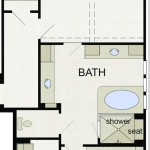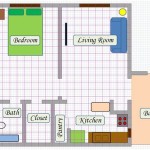Pictures of Painted Basement Floors: A Comprehensive Guide
Painted basement floors are an increasingly popular option for homeowners seeking an affordable and visually appealing flooring solution. Instead of expensive carpeting, tile, or engineered wood, painting concrete basement floors can transform a drab, utilitarian space into a functional and stylish area. Examining pictures of painted basement floors showcases the vast array of aesthetic possibilities, from minimalist modern styles to rustic, textured looks. However, the success of a painted basement floor hinges on proper preparation, appropriate material selection, and diligent application.
Visual inspiration is critical when embarking on a basement floor painting project. Viewing pictures of completed projects offers a realistic understanding of the potential outcomes, allows for the discernment of different color schemes, and aids in visualizing how the final product will complement the existing basement décor. These images showcase the versatility of painted concrete, whether aiming for a bright, airy feeling or a cozy, inviting atmosphere. Analyzing these visual examples also provides insight into different techniques, such as stenciling, faux finishes, and the use of textured paints.
The advantages of painting a basement floor extend beyond aesthetics. Painted concrete is generally easier to clean than carpet, resisting stains and dirt accumulation. It also provides a relatively resistant surface to moisture, although mitigating existing moisture issues is a prerequisite. Compared to other flooring options, the cost of painting a basement floor is significantly lower, making it an attractive option for budget-conscious homeowners. It's also a viable DIY project, reducing labor costs and allowing for personalized customization.
Preparation is Paramount: Ensuring a Lasting Finish
The key to a successful painted basement floor lies in meticulous preparation. Concrete is porous and prone to moisture, so proper surface cleaning and sealing are non-negotiable. Before painting, the concrete floor needs to be thoroughly cleaned. This involves sweeping away loose debris, vacuuming, and scrubbing with a concrete cleaner or degreaser. Removing any existing paint, coatings, or adhesives is crucial for proper paint adhesion. Mechanical methods such as grinding or sanding may be necessary to achieve a clean, bare surface.
Addressing cracks and imperfections is the next essential step. Small cracks can be filled with a concrete patching compound designed for floors. Larger cracks may require more extensive repair, potentially involving epoxy or specialized crack fillers. Allowing the patching compound to fully cure according to the manufacturer's instructions is vital before proceeding. Leveling uneven surfaces is also important to ensure a uniform final appearance. Self-leveling concrete compounds can be used to smooth out imperfections and create a level base for the paint.
Moisture testing is a critical aspect of basement floor preparation. Concrete's porosity can lead to moisture migration from the ground, which can compromise the paint's adhesion and cause bubbling or peeling. A calcium chloride test, or other reliable moisture test, should be conducted to determine the moisture vapor emission rate (MVER). If the MVER exceeds the paint manufacturer's recommended limit, applying a moisture barrier sealer is necessary. This sealer will prevent moisture from penetrating the concrete and damaging the painted surface. The sealer must be applied according to the manufacturer's instructions, ensuring complete coverage and proper curing time.
Once the concrete is clean, repaired, and moisture-sealed (if necessary), applying a primer is highly recommended. A concrete primer will improve paint adhesion, seal any remaining pores, and promote a uniform finish. Choose a primer specifically designed for concrete floors, and apply it evenly according to the manufacturer's instructions. Allowing the primer to dry completely before painting is crucial.
Selecting the Right Paint: Choosing for Durability and Aesthetics
Choosing the correct type of paint is paramount for a long-lasting and attractive basement floor. Not all paints are created equal, and selecting a paint specifically formulated for concrete floors is essential. Epoxy-based paints and concrete floor paints are the most common and effective options. Epoxy paints are known for their exceptional durability, resistance to chemicals, and ability to withstand heavy foot traffic. They typically consist of two components that are mixed together before application, creating a hard, durable finish.
Concrete floor paints, often acrylic-based, are another viable option. These paints are generally easier to apply than epoxy paints and offer good resistance to abrasion and stains. However, they may not be as durable as epoxy paints in high-traffic areas. Choosing a paint with a UV-resistant formula is also recommended, especially if the basement receives natural light, as this will prevent fading and discoloration over time.
Beyond the type of paint, the sheen also plays a role in the final appearance and functionality. High-gloss paints are easier to clean and offer a reflective surface, making the basement appear brighter. However, they can also highlight imperfections in the concrete. Semi-gloss paints offer a balance between ease of cleaning and a more subdued appearance. Matte paints provide a non-reflective finish that can conceal imperfections but may be more difficult to clean. The choice of sheen depends on personal preference and the specific needs of the basement space.
Color selection is another crucial aspect of the painting process. Lighter colors, such as white, beige, and light gray, can make a basement feel larger and more open. They also reflect light, brightening the space. Darker colors, such as dark gray, navy blue, or even black, can create a more dramatic and cozy atmosphere. However, they may also make the basement feel smaller and require more lighting. Considering the existing décor and the desired overall aesthetic is crucial when choosing a paint color. Color samples should be tested in a small, inconspicuous area before committing to the entire floor.
Application Techniques: Achieving a Professional Finish
Proper application techniques are essential for achieving a professional-looking painted basement floor. Using high-quality tools, such as rollers and brushes, is crucial for even paint distribution. When applying the paint, follow the manufacturer's instructions carefully, paying attention to recommended application rates and drying times. Typically, two coats of paint are required to achieve adequate coverage and durability. Allowing each coat to dry completely before applying the next is paramount to prevent bubbling or peeling.
Starting with edging is a common practice when painting a basement floor. Use a brush to apply paint along the perimeter of the room, ensuring clean lines and complete coverage. Once the edging is complete, use a roller to apply paint to the main floor area. Work in sections to maintain a wet edge and prevent lap marks. Overlapping each roller stroke slightly ensures uniform coverage. Rolling in a consistent direction, such as always rolling parallel to the longest wall, is also recommended for a more consistent finish.
Textured paints can be used to add visual interest and hide imperfections in the concrete. These paints contain aggregates that create a textured surface. They are typically applied with a special roller or brush designed for textured paints. Stenciling is another technique for adding decorative elements to a painted basement floor. Stencils can be used to create patterns, borders, or even entire murals. Secure the stencil to the floor with adhesive spray and apply paint with a foam roller or stencil brush. Remove the stencil carefully to reveal the design.
Curing is the final stage of the painting process. Once the final coat of paint has been applied, allowing it to cure completely before using the basement is critical. The curing time will vary depending on the type of paint and the environmental conditions. Typically, it takes several days for the paint to fully cure and achieve its maximum hardness and durability. Avoid placing heavy objects on the floor during the curing process. After the curing period, applying a clear sealant can provide extra protection and enhance the longevity of the painted floor.
Regular maintenance will help keep a painted basement floor looking its best. Sweep or vacuum the floor regularly to remove dirt and debris. Mop with a mild detergent and water as needed. Avoid using harsh chemicals or abrasive cleaners, as these can damage the paint. Place mats or rugs in high-traffic areas to protect the floor from wear and tear. Promptly clean up spills to prevent staining. With proper care and maintenance, a painted basement floor can provide years of durable and attractive flooring.

House And Home Stead Basement Floors Painting Makeover Remodeling

30 Perfect Basement Concrete Floor Paint Color Ideas Painting Floors Flooring Options

Diy Painted Basement Concrete Floor In The House Of David

7 Ingenious Painted Flooring Ideas For An Unfinished Basement

How To Paint A Concrete Floor Southern Hospitality

Types Of Paints And Stains For Concrete Floors The Home

How To Paint A Concrete Floor In Basement Twofeetfirst

13 Practical Tiips For A Painted Vinyl Basement Floor

How To Paint Concrete Floors Our Faux Farmhouse

Types Of Paints And Stains For Concrete Floors The Home







